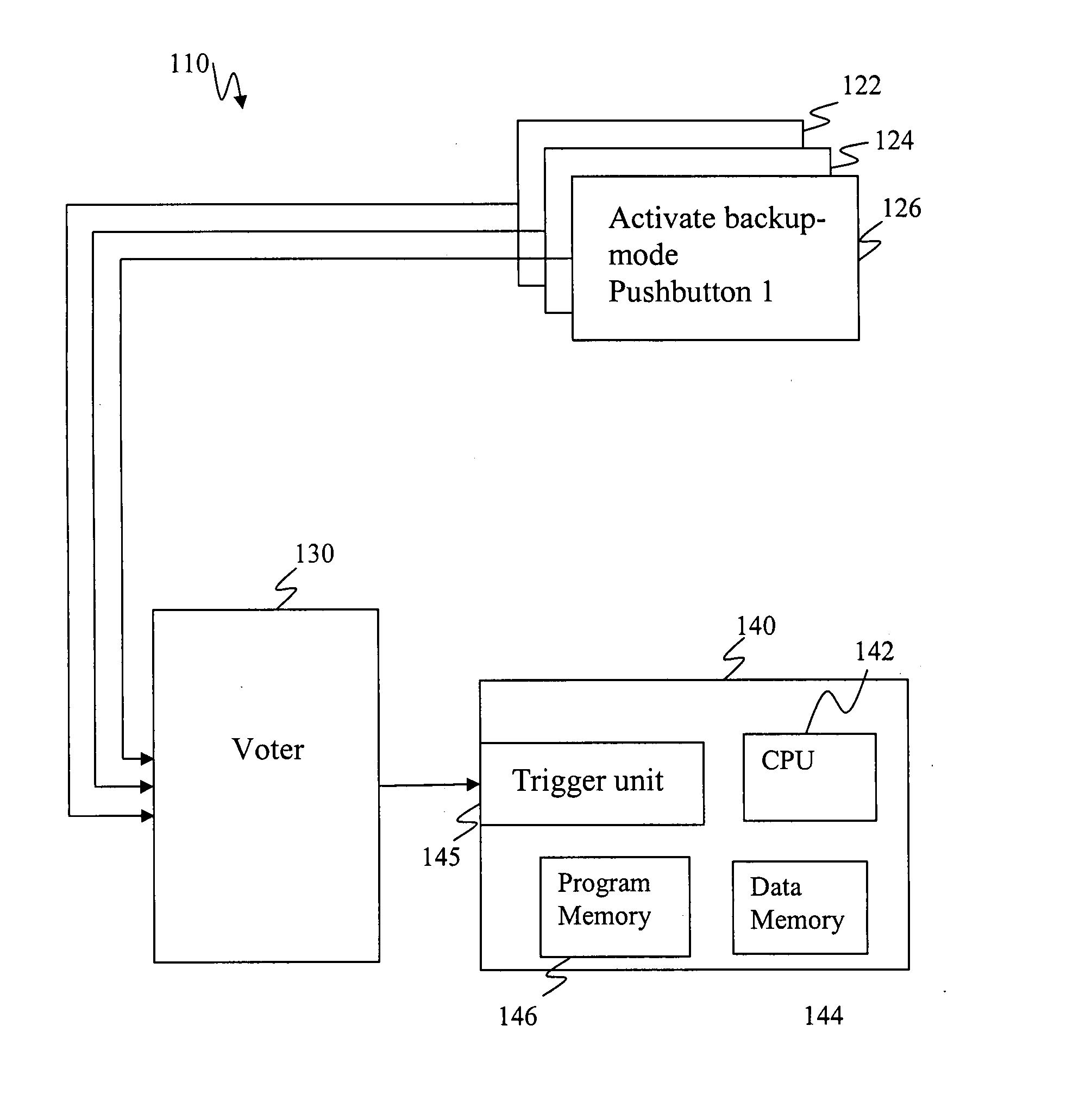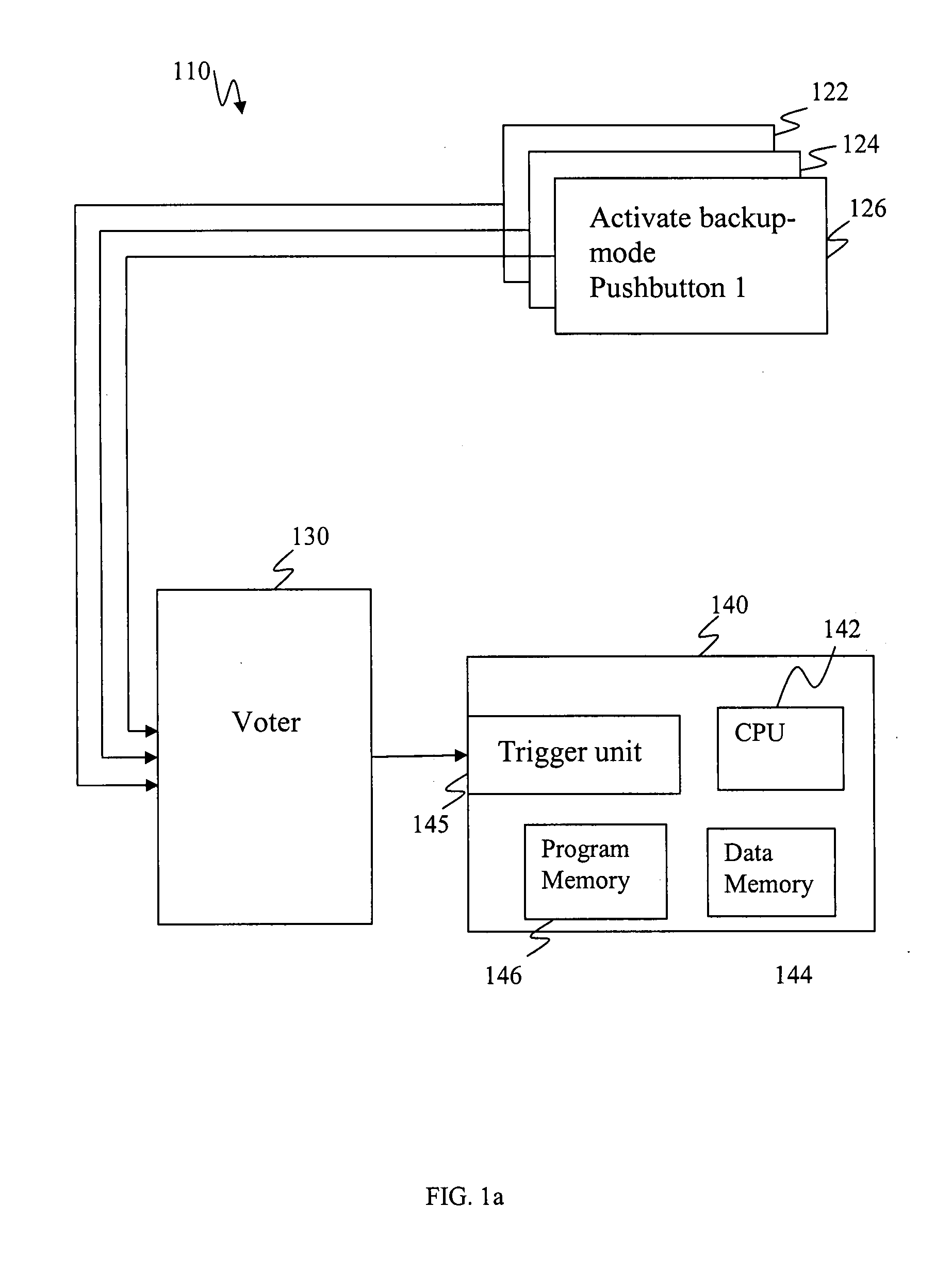Fault tolerant control system
a control system and fault technology, applied in the field of fault tolerance control systems and methods, can solve the problems of increasing the weight and cost of computing systems, reducing the availability of systems, and always occurring systemic faults, so as to reduce the amount of hardwar
- Summary
- Abstract
- Description
- Claims
- Application Information
AI Technical Summary
Benefits of technology
Problems solved by technology
Method used
Image
Examples
first embodiment
[0049] The difference between normal mode instruction and backup mode instructions in the first embodiment is that normal mode instructions have been developed in a process with a number of design goals giving high priority to high efficiency and performance and using a certain high level language and a certain low level language instruction generator when programming. The backup mode instructions have been developed in a process with a number of design goals giving high priority to simplicity and robustness and using another high level language and another low level language instruction generator when programming. In this way, a fault or a bug in the normal mode instructions causing a runtime error under certain conditions is not likely to have a counterpart in the backup mode instructions.
[0050] Thus, the backup program software may differ in the requirements from the normal program software by using different algorithms and differing in the implementation of the program by using ...
second embodiment
[0051] Referring now to FIG. 1c, a schematic illustration of the present invention, a distributed flight control system 1 of a flight vehicle is disclosed. The control system 1 comprises a number of control elements such as cockpit instruments 2, flight control computer (FCC) 3, actuator node 4, engine 5, air brakes 6 and the likes. An actuator node 4 may be adapted to control canard, elevon control surfaces or the likes of the flight vehicle. The system also receives readings from a number of sensors 7-9. These sensors are used to collect data, parameters, to provide the flight control system with input data. The sensors may be accelerometers, rate gyros, instruments that collect air data and the likes. The FCC 3, in the illustrated embodiment, comprises control laws, activation units and a backup system according to the present invention whereas other nodes of the system may not need backup systems. This may be the case when the nodes comprise rather non complex functions that can...
third embodiment
[0053] In FIG. 2 an overview of a control system 210 according to the invention is shown. In the illustrated embodiment the activation of the backup mode software program is decided based on a number of activation units, wherein the illustrated system comprises three activation units 222, 224, 226, which activation units 222, 224, 226 may be implemented in a number of other system nodes, each of these system nodes may calculate similar algorithms as the control system and compare the output of the control system to their calculation, if majority of system nodes detect a significant mismatch from the output value of the control system to the calculated value, they can activate the backup mode software program in the control system via a voter 230. The activation units may be monitoring devices that monitor the FCC in FIG. 1c. An activation unit is monitoring that an output is generated from a process within the FCC, another is a sensor that is monitoring an instrument affected by sai...
PUM
 Login to View More
Login to View More Abstract
Description
Claims
Application Information
 Login to View More
Login to View More - R&D
- Intellectual Property
- Life Sciences
- Materials
- Tech Scout
- Unparalleled Data Quality
- Higher Quality Content
- 60% Fewer Hallucinations
Browse by: Latest US Patents, China's latest patents, Technical Efficacy Thesaurus, Application Domain, Technology Topic, Popular Technical Reports.
© 2025 PatSnap. All rights reserved.Legal|Privacy policy|Modern Slavery Act Transparency Statement|Sitemap|About US| Contact US: help@patsnap.com



